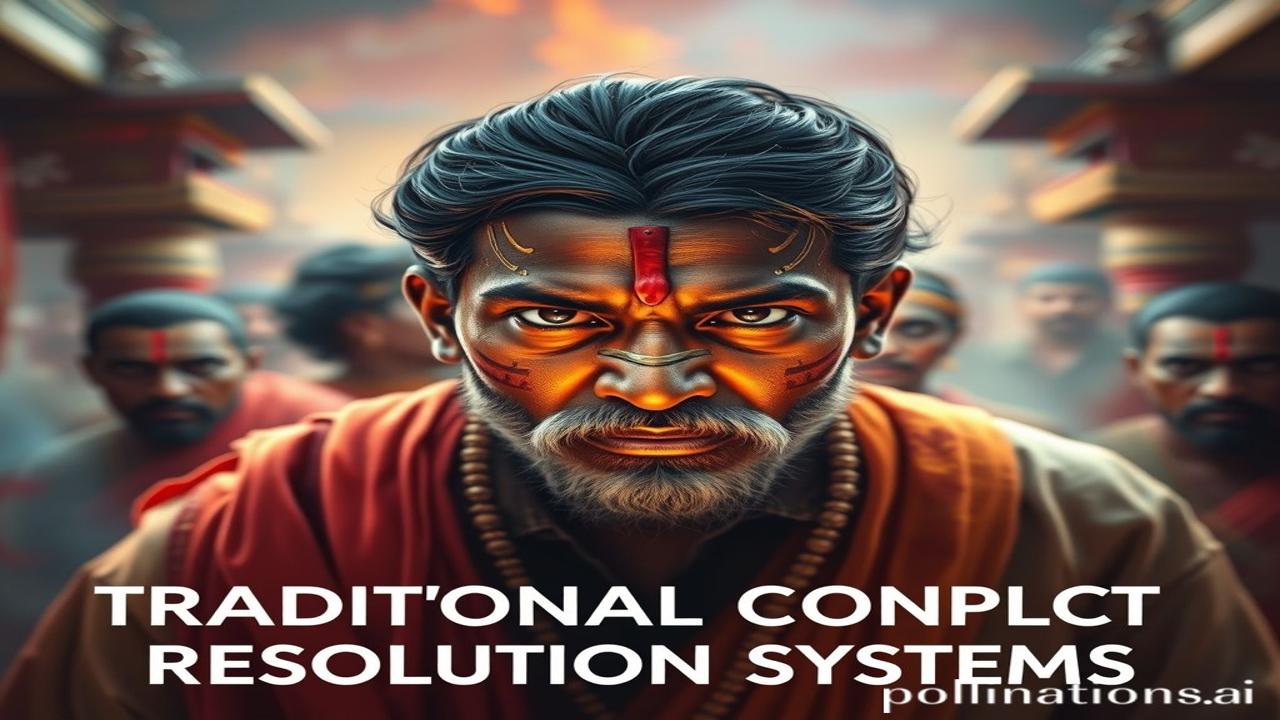Dhool Bhari Kitabon Mein Chhupe Faisle: India Ke Traditional Conflict Resolution Systems
Kabhi socha hai, agar Panchayati Raj na hota toh kya hota? Agar woh buzurg aadmi, jinki jhuriyan unki zindagi ka saar hai, na hote toh kya hota? Imagine a world without the quiet wisdom passed down generations, resolving conflicts with understanding instead of aggression. Waqt ki dhool mein kuch kahaniyan chhupi hain – stories of traditional conflict resolution systems, jo humare desh ki ruh se judi hain. Aaiye, dekhte hain in adbhut tareeqon ko, jo Bharat ko Bharat banate hain.
Itihasic Prahbhoomi: Jab Court Nahin, Samaj Hi Nyayalaya Tha
Traditional conflict resolution systems in India are as old as the Himalayas. These aren’t just some ‘old methods’; they are a testament to India’s social fabric, a system built on trust, community, and a deep understanding of human nature.
- What is this? These are informal, community-based mechanisms used to resolve disputes, often outside formal legal structures. Think village councils, caste panchayats, tribal assemblies – all acting as mini-courts, handling everything from land disputes to marital problems.
- When and Where? From the ancient Vedic period (1500-500 BCE) to the Mughal era and even during British rule, these systems flourished across the Indian subcontinent. Har gaon, har samaj mein, alag-alag roop mein.
- Why is it Important? Because these systems were accessible, affordable, and culturally relevant. For centuries, the vast majority of Indians resolved their disputes within their communities, maintaining social harmony and preventing the legal system from being overwhelmed. It’s about ‘apnapan’ and ‘samjhauta’ – finding solutions that work for everyone.
Zameeni Sach – Log Aur Jeevan: Kahaniyon Mein Basta Itihas
Imagine a bustling village in Rajasthan. Dhup tej hai, aur hawa mein mitti ki khushboo. The village sarpanch, a respected elder with a white turban and a weathered face, calls a panchayat to address a dispute between two farmers over water rights.
“Bhaiyon,” he begins, his voice calm yet firm. “Yeh jhagda hamare gaon mein dushmanee na paida kare. Ham sabko milkar hal nikalna hai.”
The farmers, initially angry, slowly begin to speak, presenting their sides of the story. The panchayat, comprising other respected villagers, listens patiently, asking questions, and weighing the evidence.
“Maana ki…Maana ki Ramlal ne pehle paani liya,” says one panchayat member, “Lekin Shyamlal ki fasal bhi toh khatre mein hai. Kya hum koi aisa raasta nikaal sakte hain ki dono ko fayda ho?”
After hours of deliberation, a solution is reached. Ramlal agrees to share the water, and Shyamlal offers to help Ramlal with his harvest. The conflict is resolved, not through legal jargon, but through empathy, understanding, and the power of community.
Ma Rukmini ne aaj naye kapde pehne, kyunki mandir mein utsav tha… Aur wohi mandir aaj panchayat ka maidaan bana tha. This system wasn’t just about resolving disputes; it was about reinforcing social bonds and maintaining the community’s fabric.
Dharohar Aur Pehchaan: Aaj Ke Bharat Mein Yeh Kahaan Hai?
While the formal legal system has become more dominant, the echoes of traditional conflict resolution systems can still be heard in modern India.
- Panchayati Raj Institutions (PRIs): These are a direct descendant of the ancient village councils, mandated by the Constitution to promote local self-governance and resolve disputes at the grassroots level.
- Khap Panchayats: Though controversial and often criticised for their regressive views, Khap Panchayats in some parts of India still wield considerable influence, particularly in matters of social customs and honour.
- Community Mediation: Many modern mediation programs are inspired by the principles of traditional conflict resolution, emphasizing dialogue, empathy, and community involvement.
These systems, even in their modern forms, connect us to our Bharatiyata – our deep-rooted cultural values of community, respect for elders, and the pursuit of harmony.
Majedar Tathya Ya Bhram-Bhanjak: Kuchh Sach, Kuchh Jhoot
Myth: Traditional systems are always fair and just.
Reality: While these systems often prioritize community harmony, they can also be susceptible to biases, power imbalances, and discriminatory practices, particularly against women and marginalized groups. Sach hai ki, samay ke saath, in mein bhi galtiyan aati hain.
Fun Fact: Some traditional systems used unique methods to resolve disputes, such as divine ordeals – where the accused was subjected to a dangerous test, and their survival was seen as proof of their innocence. Agar koi sachcha hai toh aag usko nahin jalayegi! (Of course, these methods are no longer practiced).
Drishya Aur Bhavnaen: Anubhavon Mein Jeena
Imagine walking into a dimly lit chaupal. The air smells of woodsmoke and incense. The rough texture of the charpai beneath you. The voices of the elders, weathered and wise, echoing in the stillness. The weight of tradition, palpable in the atmosphere. This is where decisions are made, destinies are shaped, and communities are bound together. The scent of jasmine from the women grinding spices nearby, mixing with the heavy scent of earth from the freshly plowed fields. You can almost taste the centuries of history and shared experience in the air.
Antim Vichar Ya Uddharan: Ant Ki Baat
Traditional conflict resolution systems are more than just historical relics; they are a reminder of the power of community, the importance of empathy, and the enduring value of dialogue in resolving disputes. While formal legal systems are necessary, we must not forget the wisdom of our ancestors, who understood that true justice lies not just in legal rulings, but in fostering reconciliation and healing within the community.
“Sarve bhavantu sukhinah, sarve santu niramayah,
Sarve bhadrani pashyantu, ma kashchid duhkhabhag bhavet.”
May all be happy, may all be free from illness,
May all see what is auspicious, may no one suffer.
Because, in the end, it’s about building a society where everyone can thrive.
